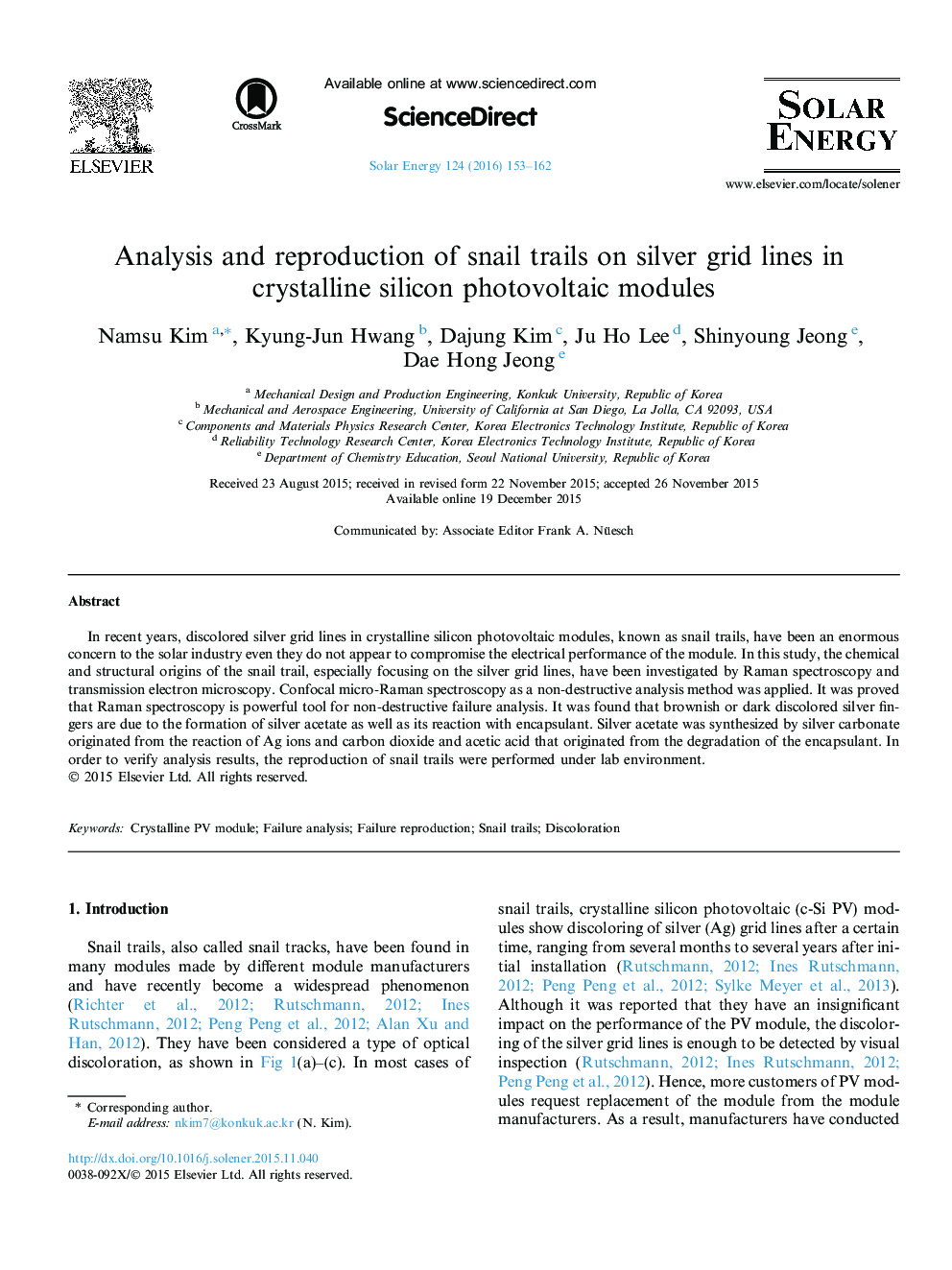| Article ID | Journal | Published Year | Pages | File Type |
|---|---|---|---|---|
| 1549447 | Solar Energy | 2016 | 10 Pages |
•PV module with snail trail was analyzed with destructive and non-destructive method.•It was found that discoloration is due to the formation of Ag2CO3 and AgC2H3O2.•The reactions of produced particles with encapsulant also impact the discoloration.•Snail trail was successfully reproduced under controlled environmental conditions.
In recent years, discolored silver grid lines in crystalline silicon photovoltaic modules, known as snail trails, have been an enormous concern to the solar industry even they do not appear to compromise the electrical performance of the module. In this study, the chemical and structural origins of the snail trail, especially focusing on the silver grid lines, have been investigated by Raman spectroscopy and transmission electron microscopy. Confocal micro-Raman spectroscopy as a non-destructive analysis method was applied. It was proved that Raman spectroscopy is powerful tool for non-destructive failure analysis. It was found that brownish or dark discolored silver fingers are due to the formation of silver acetate as well as its reaction with encapsulant. Silver acetate was synthesized by silver carbonate originated from the reaction of Ag ions and carbon dioxide and acetic acid that originated from the degradation of the encapsulant. In order to verify analysis results, the reproduction of snail trails were performed under lab environment.
